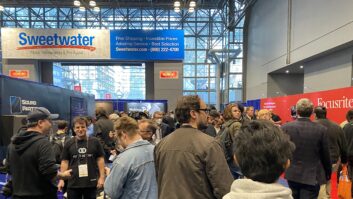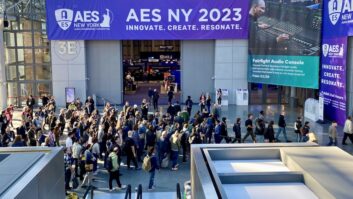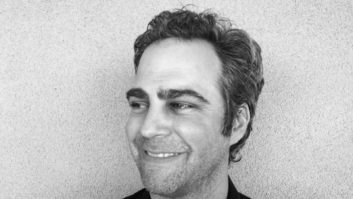Los Angeles, CA (August 13, 2015)—The AES Los Angeles Section will dig deep into use of digital audio networking for a broad spectrum of communities at its monthly meeting on August 25, looking at applications ranging from music recording and touring sound to permanent installations, broadcast, film and TV facilities.

Presented by Kevin Gross, current chairman of the AES Technical Committee on Networked Audio Systems, the meeting will provide an overview of emerging trends during the past 30 years, covering operating principles and capabilities of various Ethernet-based protocols ranging from Cirrus Logic’s CobraNet through Audio Video Bridging (AVB) to the new AES67 protocol.
Last October’s AES Convention in Los Angeles saw the launch of the Media Networking Alliance, which was set up to promote adoption of the non-proprietary AES67-2013 networking standard. An open audio-over-IP interoperability protocol that uses a Layer-3 protocol suite based on existing standards, AES67 is designed to enable interoperability between various IP-based networking formats, such as Audinate Dante, Ravenna, Telos Alliance Livewire and QSC Audio Q-LAN.
AES67-2013 (formerly known by its project name, AES-X192) was created to address the interoperable operation of different high-performance networked audio transport systems for live-sound reinforcement, broadcast and fixed installations. AES67 provides interoperability recommendations in the areas of synchronization, media-clock identification, network transport, encoding and streaming, session description and connection management. The network performance to meet these requirements is available on local-area networks and achievable on enterprise-scale networks.
Looking towards the future, Kevin Gross will focus on the ways in which users can create enhanced interoperability between systems and devices using the non-proprietary, low-latency AES67-2013 standard over Ethernet. The meeting will also look at how the concepts used for audio networking are being extended to carry video, and how network convergence is being applied to unify all manner of communications onto a single network infrastructure.
“Quality of service is essential for any real-time networking scheme, including AES67,” Gross states. “Any standard needs to provide guaranteed delivery of packets of digital audio over a properly configured network. AES67 provides reliable multichannel connections with very low latency, and can be implemented as an interoperability mode on existing devices, in addition to the device’s native protocol.”
AES Los Angeles
Aesla.org







